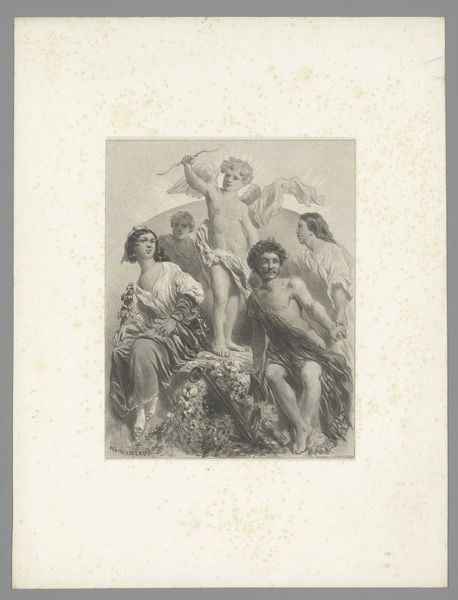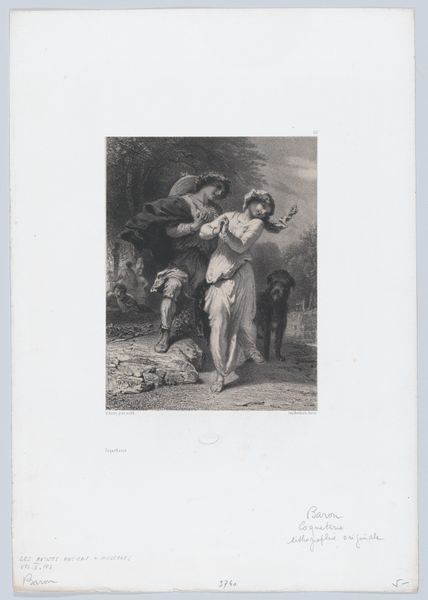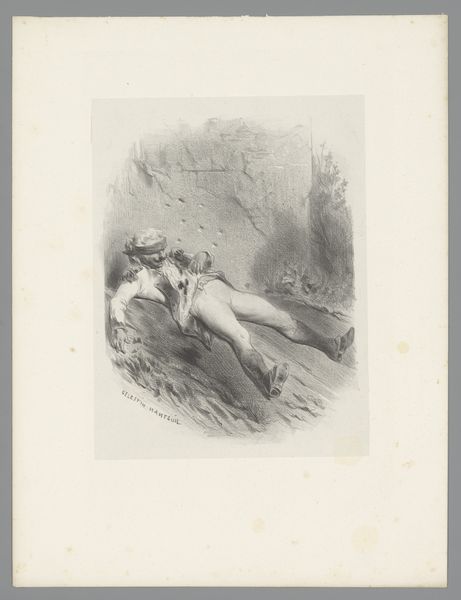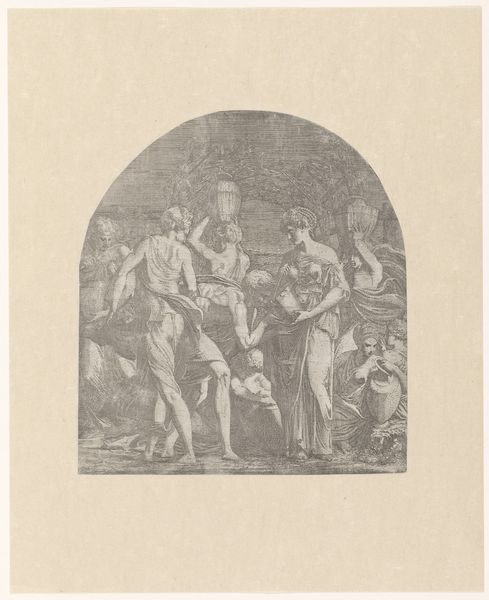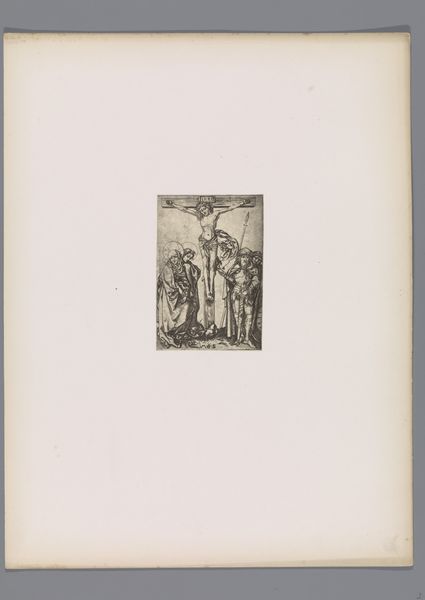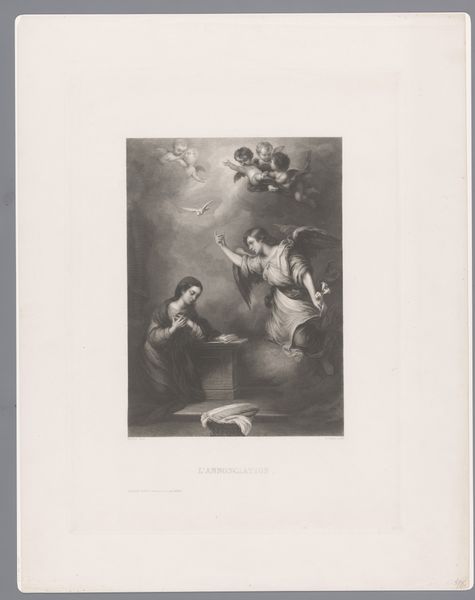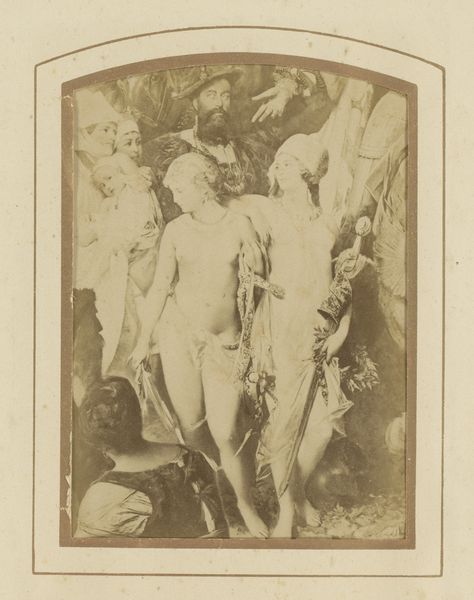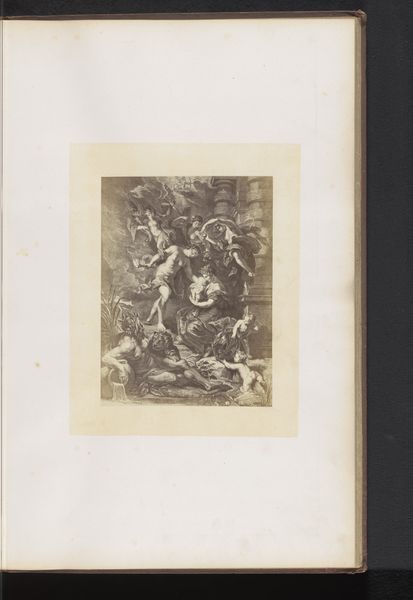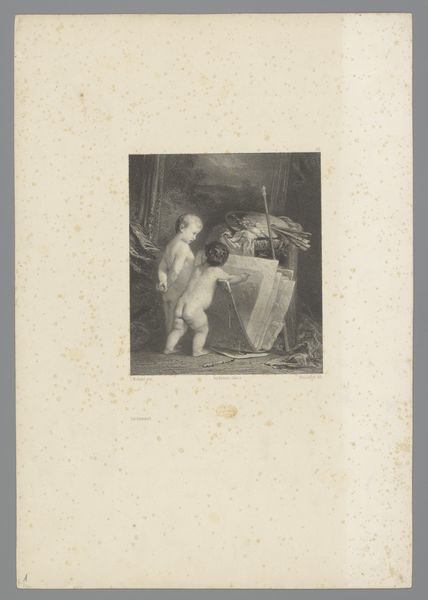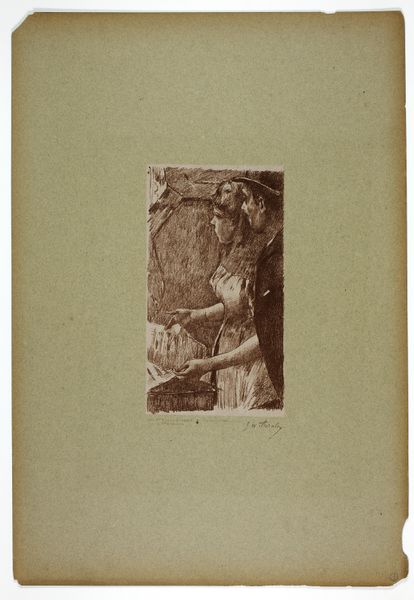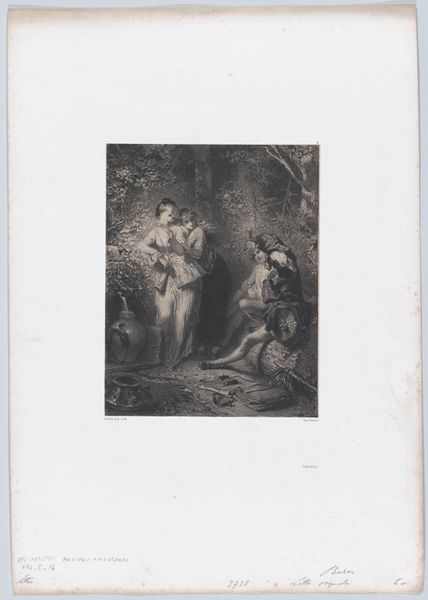
Fotoreproductie van het schilderij De genius van de roem door Annibale Carracci before 1875
0:00
0:00
Dimensions: height 245 mm, width 161 mm
Copyright: Rijks Museum: Open Domain
Curator: Here we have an intriguing albumen print, a photographic reproduction dating from before 1875. It captures Annibale Carracci's painting "The Genius of Fame". The Rijksmuseum houses this particular print. Editor: My initial impression is one of dramatic idealism. The soaring figure, the cherubic forms, the overall monochrome tonality creates a celestial realm—though I do question the reproduction process itself. Curator: Yes, it's essential to consider this artwork as both a photograph and a reproduction of a baroque painting. Photography was rapidly evolving then; albumen prints like this were a popular method for reproducing artworks, making them accessible to a wider audience. It democratized access. Editor: Democratization, yes, but filtered through a specific lens. The act of reproducing, selecting, and then presenting a piece of art from another time highlights a very distinct value system and idealization of artistic and cultural heritage, wouldn’t you agree? Curator: Absolutely. The selection of Carracci, a key figure in Bolognese classicism, speaks volumes. His work promoted ideals sanctioned by powerful academies. Editor: We see that the allegory of Fame depicted—triumph, accolades, divine right—all of these are so steeped in the artistic patronage of the 17th century’s elite power structures. I wonder how ordinary viewers, newly able to access it through photography, may have interpreted it. Was it aspirational or alienating? Curator: Good point. Consider that the printing process also alters the reception. An albumen print holds its own aesthetic value and social function that transforms it from its painted origin. The grayscale flattens the dramatic coloring Carracci likely employed, it gives a unique atmosphere. Editor: The flattening effect is noteworthy, almost muting the work and taking away some of its original propaganda power. Even as photography reproduced artwork, it could subvert it. The Genius, framed in our current social climate of political uncertainty is more reflective of the role that artistic legacy has to play with influencing generations and history. Curator: It serves as a compelling case study, revealing both the power and potential constraints inherent in art historical canonization, the politics of visual accessibility and reinterpretation across different social spheres. Editor: Indeed, something about seeing this reproduced form invites one to think beyond a romanticized era and confront the enduring nature of image circulation, media and ideology.
Comments
No comments
Be the first to comment and join the conversation on the ultimate creative platform.
